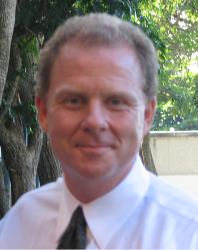Friday, March 12, 2010
Using photo sharing websites to support your volunteer training
I am working with Volunteering England this month and decided that a great way to get over the jet lag as fast as possible was to run in a half marathon race which I did last Sunday. Out of it (along with some sore legs) came an idea of how photo sharing websites could be used to augment your volunteer training. It was a very well run race and I’d like to say thank you to the organizers and all of the volunteers. Among many other tasks, the volunteers kept us on course and well hydrated. I usually observe the workings of volunteers a little whenever I get the opportunity and given the amount of time I spent plodding along the race course, I got to think about my observations a little more than usual.
The saying about a picture being worth a 1,000 words came to mind while thinking about how some of the volunteers were fulfilling their role. It occurred to me that given how easy it is to put illustrative photos online and distribute the link to all (or at least most) volunteers that this would be worth adding to the training processes for some organizations.
In the case of this race, there were two occurrences where I thought photos demonstrating preferred practices would have helped the volunteer, and in turn the race participants. Both involved course marshals directing us around two different corners. Rather than standing on the outside of the corner, they had moved in closer to the inside corner. Both were enthusiastically cheering us on as we passed and I imagined that it was this enthusiasm that drew them closer to the action. This would not have likely caused a problem for the elite runners who got there long before me and would have been running with few, if any, other runners next to them. The race had over 3,000 participants so the majority of us who were not leaders in the race ran in very large groups based on our common running paces. When these groups got to these particular corners, we had to jostle unnecessarily for a position in which to navigate the corner.
If those volunteers could have seen a picture demonstrating exactly where to stand, that would have reinforced any verbal or written instructions. Even better, if that volunteer could have seen a picture of a volunteer standing at any tight corner of a race WHILE a previous race was going on and a crowd was trying to get around the corner, the volunteer would have more likely understood the ramifications of positioning and been less likely to even need to remember an all-encompassing set of instructions.
Two of the big names in photo sharing sites that are certainly worth looking are www.flickr.com and picasa.google.com.
A picture can indeed tell a thousand words. Where could you put them to use in your volunteer program? If you do already, please add your suggestion here.
Subscribe to:
Post Comments (Atom)

No comments:
Post a Comment